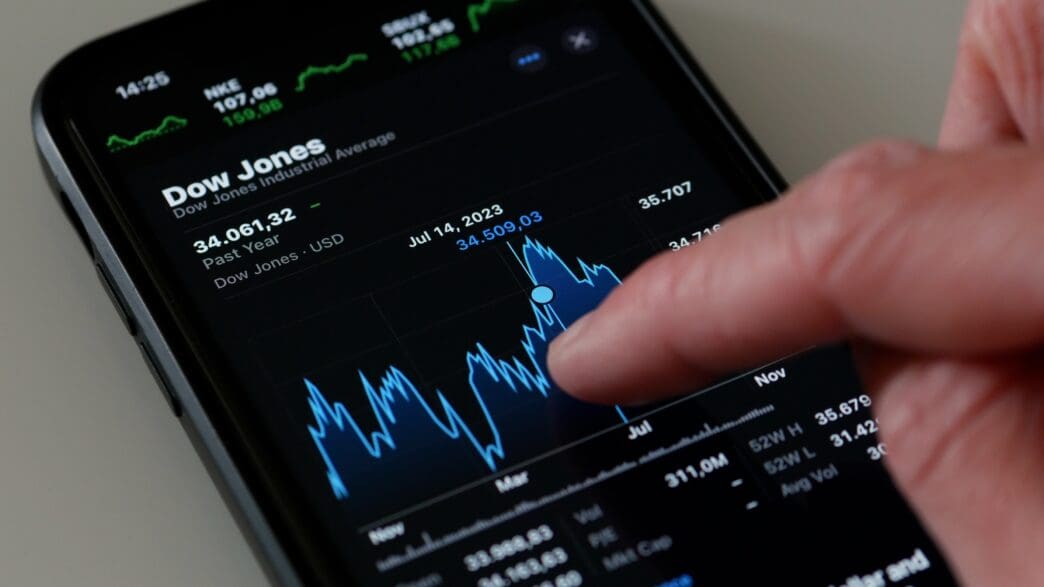Executive Summary
The Story So Far
Why This Matters
Who Thinks What?
Wall Street saw major indices surge to record highs on Wednesday, with the Dow Jones Industrial Average climbing 0.6% and both the S&P 500 and Nasdaq Composite gaining approximately 0.2%. The rally was fueled by strong technology earnings, particularly in the artificial intelligence sector, and increasing hopes for a resolution to the ongoing US government shutdown. This market optimism contrasted with a significant decline in Bitcoin, which dropped to around $107,000 earlier in the week, reflecting cautious sentiment regarding the Federal Reserve’s interest rate stance and increased selling pressure from investors.
US Equities Reach New Peaks
The Dow Jones Industrial Average extended its rally, hitting fresh intraday highs after a record close on Tuesday. Investors responded positively to robust tech earnings and the growing likelihood that the US government shutdown might conclude soon. The S&P 500 and Nasdaq Composite also posted gains, indicating a broad, albeit cautious, wave of optimism across the market.
AI Optimism Drives Tech Gains
Advanced Micro Devices (AMD) shares surged over 8% after CEO Lisa Su projected the AI data-center market could reach $1 trillion by 2030, citing “insatiable” demand for AI chips. Nvidia also rose nearly 1% following partner Foxconn’s report of a 17% year-over-year earnings jump, which underscored a continued boom in data-center demand. German chipmaker Infineon echoed similar positive sentiment, further boosting investor confidence in AI-focused semiconductors.
Financials Bolster Dow
The Dow’s ascent was significantly supported by financial stocks, with Goldman Sachs, JPMorgan, and American Express all reaching new intraday highs. Broader gains were observed across companies such as UnitedHealth, IBM, and Nike. In contrast, the Nasdaq experienced mixed results as some tech stocks retraced earlier gains, reflecting cautious sentiment regarding elevated valuations in the sector.
Washington Developments and Fed Outlook
Market sentiment was also influenced by developments in Washington, where the Senate passed a spending bill on Monday. A House vote, anticipated on Wednesday evening, could potentially end the longest US government shutdown in history. A resolution would facilitate the release of delayed economic data, including September’s jobs report, which investors are keenly awaiting to gauge the economy’s health and its potential influence on the Federal Reserve’s December policy decision.
Most traders continue to anticipate a quarter-point rate cut at the Federal Reserve’s December meeting. Earnings season is proceeding at a slower pace, with Cisco set to release results after Wednesday’s market close. Earlier, crypto company Circle reported a quarterly profit beat, although its shares experienced a slight decline.
Bitcoin Faces Steep Decline
Earlier in the week, Bitcoin experienced significant pressure, dropping to approximately $107,000 and raising concerns among traders and investors. Analysts warned that the cryptocurrency’s price could fall as low as $88,000 if market sentiment does not improve. This decline represents a notable setback for Bitcoin, which typically sees strong performance in October.
Fed’s Stance and Institutional Pullback
The primary catalyst for Bitcoin’s recent slide was the Federal Reserve’s cautious tone following its latest interest rate decision. While the Fed reduced rates last week and signaled plans to end quantitative tightening by December, Fed Chair Jerome Powell emphasized that another cut in December was not guaranteed. This statement dampened optimism across financial markets, with the odds of a December rate cut dropping from 90% to 63% according to the CME FedWatch Tool.
Adding to the unease, the Crypto Fear and Greed Index remained in the “fear” zone at 35, indicating persistent caution among traders. Institutional investors also demonstrated a pullback, withdrawing nearly $800 million from Bitcoin and Ethereum ETFs last week. Long-term holders intensified Bitcoin’s decline by selling over 100,000 BTC in October, breaking a seven-year bullish streak for the month.
Key Price Levels and Outlook
Analysts identify $113,000 as a critical resistance level for Bitcoin, with a failure to hold above it risking a fall to $88,000. The $88,000 mark aligns with Bitcoin’s realized price, historically acting as strong support during corrections. Conversely, a sustained close above $113,000 could invalidate the bearish outlook and open the door for a short-term rebound.
For November 2025, Bitcoin is projected to trade sideways between $107,500 and $123,000, with market uncertainty over US economic data and a potential government shutdown potentially keeping volatility elevated. However, some analysts suggest a “Santa Rally” could emerge in December if the Fed follows through with its plans to end quantitative tightening and possibly cut rates again.
Wednesday’s market activity highlighted a divergence in investor sentiment, with US equities demonstrating resilience and optimism driven by technological advancements and potential policy resolutions. Conversely, the cryptocurrency market, particularly Bitcoin, faced headwinds from macroeconomic caution and institutional withdrawals, underscoring the differing factors influencing various asset classes.








